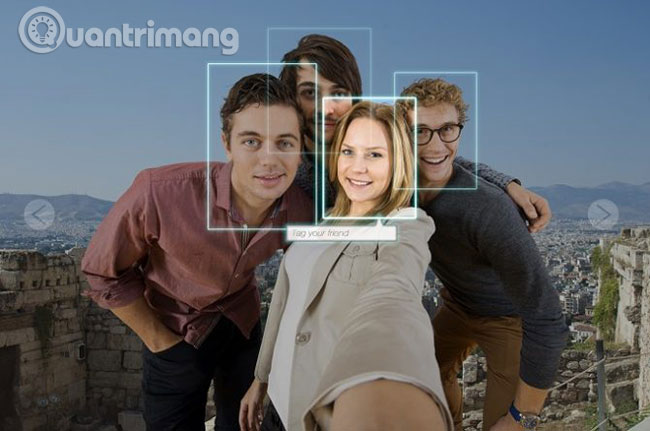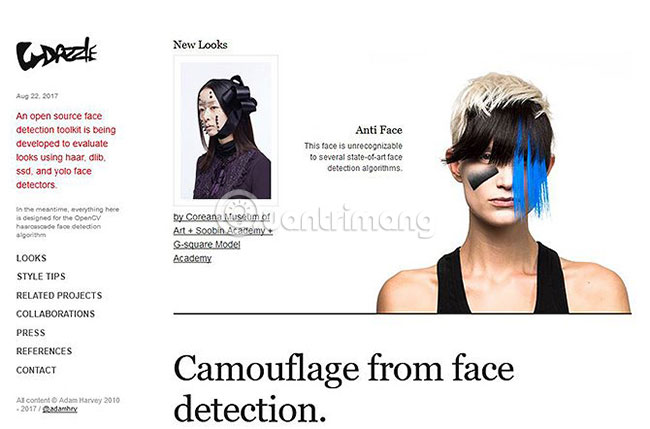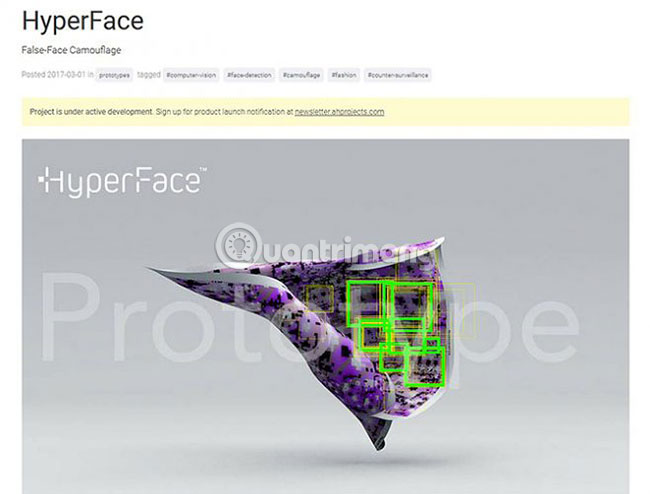4 ways to avoid face recognition online and in public
A heated debate about the legitimacy of face recognition software is continuing. Many people are concerned that face recognition software is being used to track their movement and the threat to freedom that this software causes. While this issue is being debated, there are steps you can take to avoid some facial recognition software, both online and directly.
How to disable face detection
- Why does face recognition become a concern?
- The accuracy of face recognition software
- How to avoid face detection online?
- 1. Disable face recognition on Facebook
- 2. Use FaceShield when uploading photos
- How to avoid face detection directly?
- 3. Use wigs and makeup to trick face recognition software
- 4. Use clothes to distract facial recognition
Why does face recognition become a concern?
 4 ways to avoid face recognition online and in public Picture 1
4 ways to avoid face recognition online and in public Picture 1
Face recognition works by analyzing images from photos or videos. The software runs through millions of images to identify features related to human faces. These characteristics, such as the distance between the eyes, can then be 'measured'. This means that software is becoming more "adept" not only when recognizing faces in general but also when identifying specific faces.
This has worried many people, considering it a privacy invasion, helping private companies to be able to track where they come in public places. In addition, there are concerns about security, if this information is leaked or misused.
The city of San Francisco is strong in banning the use of facial recognition software. And now similar measures are being considered in the UK.
The accuracy of face recognition software
There are also concerns about the accuracy of facial recognition software. When a technology is too 'fledgling', it can make mistakes at any time. You may be mistakenly identified as another person or accused of something caused by someone else.
This is a particularly interesting issue for people of color and women. Much of the training data used for the software so far is the image of white men. Therefore, the software works best in identifying white male faces.
Face recognition reaches 99% accuracy for white men, but can be 35% error-prone with colored women.
This means that people of color and women have more reasons to be wary of face recognition and worry about misuse of these data.
How to avoid face detection online?
 4 ways to avoid face recognition online and in public Picture 2
4 ways to avoid face recognition online and in public Picture 2
The first step to avoiding online face recognition is to pay attention to where the image is uploaded.
Social networking sites like Facebook have facial recognition algorithms to analyze images uploaded to the website, to make suggestions for those who should be tagged in them. When someone tags you in photos, it means social networking sites are training algorithms to identify your face more accurately.
You can cancel your own image on Facebook and also ask your friends not to tag you. If possible, you should learn about Facebook's privacy settings to find out who can see your photos. You may also want to put your Instagram account private so that your photos are not shared widely.
1. Disable face recognition on Facebook
You should turn off automatic face recognition on Facebook.
To turn off this feature, refer to the instructions in the article: How to turn off face recognition on Facebook. Disabling this feature will prevent people from tagging you.
However, according to Consumer Reports, not all Facebook users have access to this feature. If it is not available, you will have to submit a complaint to the Facebook support team.
2. Use FaceShield when uploading photos
You may still want to share photos online, but do not display them with face recognition software. In that case, you can use FaceShield tool.
FaceShield is a filter that you apply to your photos before uploading them to a website. This tool only makes minor changes to the image, but the developers think it makes the face more unrecognizable to face recognition software. FaceShield is currently only available as an online tool, but an application is currently scheduled to launch soon.
This tool will help protect your image from certain types of facial recognition software, but not all. FaceShield operates on 'trained' software, based on publicly accessible data sets, like software sold to many different security companies, except companies like Facebook, use its own proprietary software.
However, FaceShield is a useful tool to minimize your image display level for face recognition software.
How to avoid face detection directly?
However, avoiding online face recognition is only half the battle. You also need to be aware of all the places where face recognition is happening directly.
Facial recognition software is often used for security at major events, airports and other strict security locations.
The simplest way to avoid face detection directly is to obscure your face with a towel. However, this may be illegal in some places and there are drawbacks that are very noticeable.
3. Use wigs and makeup to trick face recognition software
 4 ways to avoid face recognition online and in public Picture 3
4 ways to avoid face recognition online and in public Picture 3
An ingenious way to avoid face recognition is to use techniques like CV Dazzle. This approach uses bold forms of makeup and hairdressing, makes the face detection software confusing and acts as a form of camouflage for the face.
The appearance is 'disguised' with a high contrast makeup, with dark colors on light and light skin on dark skin. Hairstyles often partially or completely obscure the nose area between the eyes, often the key to facial recognition. The appearance is also made asymmetric, because facial recognition software is used to create symmetrical images between the sides of the face.
Applying these techniques requires skill, so it is not a method for everyone. But if you are interested, you can download the samples from CVDazzle.com or see the online guide to learn how to create the following effects:
4. Use clothes to distract facial recognition
 4 ways to avoid face recognition online and in public Picture 4
4 ways to avoid face recognition online and in public Picture 4
Another option is to distract the facial recognition software, by 'overwhelming' the software with images that look like faces, making it impossible to see your real face. This is the approach taken by the HyperFace project.
Hyperface uses prints for clothing and other textile fabrics, containing 'fake faces'. Face detection software will have to 'grapple' to distinguish your real face with a simulated face on a fabric background, making tracking more difficult.
These prints have not been made public, but in the future they can be a tool against face recognition software.
Face recognition technology is a concern of many people. It is not only a threat to freedom, but also a new and relatively immature technology. Face recognition technology is not completely accurate and reliable.
Learn more about face recognition that is violating your privacy and use the tips above to avoid it both online and in person!
You should read it
- Face recognition features of Chinese technology companies will dominate the world in 2019
- The face detection feature of the OnePlus 6 is easily overcome by a printed photo
- It's time to face the 'reverse side' of face recognition technology
- Sony is about to introduce face detection technology with a new laser sensor, far beyond Apple's Face ID
- Smartphone unlock feature with face recognition system makes owner lost 1,800USD while sleeping
- Programming a face detection tool in Python
- New face recognition technology can identify objects up to 1,000 meters away
- Order food with facial recognition technology, not much to say
- How does Apple's Face ID work?
- AI technology and face recognition are used to build shelters for stray cats
- 4 ways to improve Face ID stability
- Like iPhone X, unlocking faces on Galaxy S10 is easily fooled by stills or videos
May be interested

Download Kingdom: New Lands - Strategy game worth $ 5.99, is free

11 best MySQL monitoring tools for adjusting and managing SQL Server performance

Set up Query Criteria in Access 2016

What is Librem One?

Summary of shortcut Adobe Photoshop Lightroom

Instructions for placing helicopters on FastGo application






 It's time to face the 'reverse side' of face recognition technology
It's time to face the 'reverse side' of face recognition technology New face recognition technology can identify objects up to 1,000 meters away
New face recognition technology can identify objects up to 1,000 meters away Programming a face detection tool in Python
Programming a face detection tool in Python Facebook stopped automatic face recognition because of a lawsuit
Facebook stopped automatic face recognition because of a lawsuit 4 ways to improve Face ID stability
4 ways to improve Face ID stability Smartphone unlock feature with face recognition system makes owner lost 1,800USD while sleeping
Smartphone unlock feature with face recognition system makes owner lost 1,800USD while sleeping